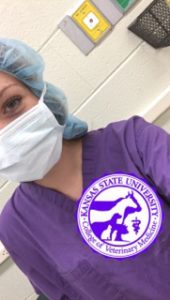 My last week on small animals was met with a huge scenery change. Instead of being solely on general internal medicine, with the occasional visit to the ICU and viewing windows of the operating rooms for surgery, this week Dr. Harkin set it up so that I would get to spend time on both the soft tissue surgery and exotics rotations.
My last week on small animals was met with a huge scenery change. Instead of being solely on general internal medicine, with the occasional visit to the ICU and viewing windows of the operating rooms for surgery, this week Dr. Harkin set it up so that I would get to spend time on both the soft tissue surgery and exotics rotations.
My week started on internal med, like it has since day one, with the normal routine: checking up on inpatients, asking tons of questions, and becoming progressively more hands on with animals and lab work. Then, Wednesday rolled around and I became a part of the soft tissue surgery rotation which, unbelievably enough, is even faster paced than the internal med. The first case I saw that day was a dog with an enormous soft tissue sarcoma on her right forelimb. I was able to be a part of every step of the process, from prep to procedure to recovery. They even got me a step stool (yes, I’m very good at looking like a child who doesn’t know what she’s doing) to stand on in the OR so that I could see over the top of all the hands and tools to the cuts they were making. It was very interesting to watch. Afterwards, I helped the student on the case to monitor the dog as she woke up from anesthesia and was taken off her ventilator. Everything ran smoothly and I’m told that she gets to go home soon. The rest of the day was filled with post-operation checks on all the other animals in the surgery ward, and around 3 o’clock, a Dachshund came in because she had lost function in her back two limbs. After doing a neuro and a physical exam and getting radiographs, Dr. Haynes (the soft tissue surgery clinician) came to the conclusion that the dog had a lesion in her spine at T4. This lesioned spinal disc was putting pressure on her spinal chord, temporarily paralyzing the caudal half of her body. The surgeons were debating whether they should preform the surgery that night or the next day, so I left and ate dinner and one of the students promised to tell me if they decided on surgery. At around seven p.m., I got a call to come back in because they were prepping the dog for surgery. The student let me in and I went immediately to the OR where I watched them break up the damaged spinal disc and remove it. The pressure on the dog’s spinal chord was relieved and she was able to regain motor function in her legs. After watching the surgery, I went back to the apartment and went to bed (eat, sleep, vet med, repeat, am I right?)
On Thursday morning, I reported to the exotics ward where I began my day listening to students’ presentations on general care of sugar gliders, prairie dogs, and hedgehogs. Exotics consist of all the animals that don’t fit under the general medicine categories (canine, feline, equine, or food animal). They treat animals from house pets like fish, birds, and rodents to the larger zoo animals. After presentations, we had an appointment with a mouse that had a ridiculous amount of parasites. This mouse was presented with persistent itchiness and scratching to the point of causing sores. From skin samples and fecal samples closely examined under microscope, we found that he had two types of pinworm and mites. We treated him with the smallest amount of medicine I have ever witnessed being administered. After our exam on the mouse the vet students ordered Thai food for all of us. We ate lunch and afterwards I went back to soft tissue surgery. I was able to get in on two more surgeries: an abdominal exploratory on a septic police dog and a lung and chest cavity repair on a dog that was attacked by three greyhounds.
Because even vet students need an occasional field trip, on Friday I accompanied the exotics group to the Sunset Zoo here in Manhattan. We had a scheduled procedure to remove an abscess from the foot of a vulture. I was able to help put the vulture under anesthesia, witness the procedure from right next to Dr. Wright (the exotics resident), and to help biopsy the abscess after it was removed. After closing the vulture’s foot and recovering her, we moved her to a clean, cool inside cage where she will stay for a few days while she regains function. We then moved to the enclosure where the zoo was keeping two new emus that needed to be vaccinated, implanted with a tracking device, and have blood drawn. There were six syringes in all and not enough hands to record, hold down the emus, fill syringes, and use the syringes all at once so I was asked to hold them all. That would have been easy enough if four of the syringes didn’t look exactly the same and have exceptionally similar names. I stood and quickly handed each syringe to the vet when they called out what they needed and I had to make sure I was giving the correct syringe at the correct time; for instance, if I had given the tracking device when I was not supposed to, the large needle could have made the emu’s jugular vein unable to clot, and a tracking device does not belong in the jugular vein anyway. Needless to say, my Friday was an eventful one, and the vet students and clinicians all thanked me for my willingness to help and my extra hands. Even though I really didn’t do all that much I felt accomplished for actually being able to help with something and that I got everything right. The emus were safe thanks to my memory and listening skills (mostly thanks to the vets, but hey, I did something!). Next week I begin my equine rotation. I can’t believe half of my internship is already over!

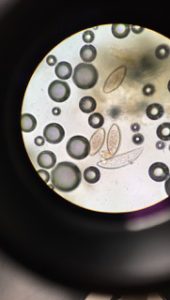
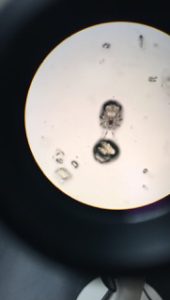
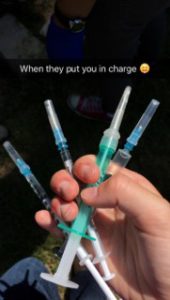
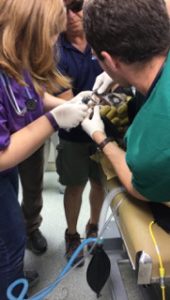
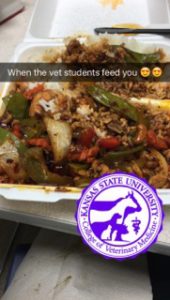
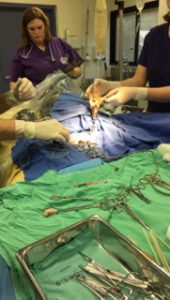
There are no comments published yet.